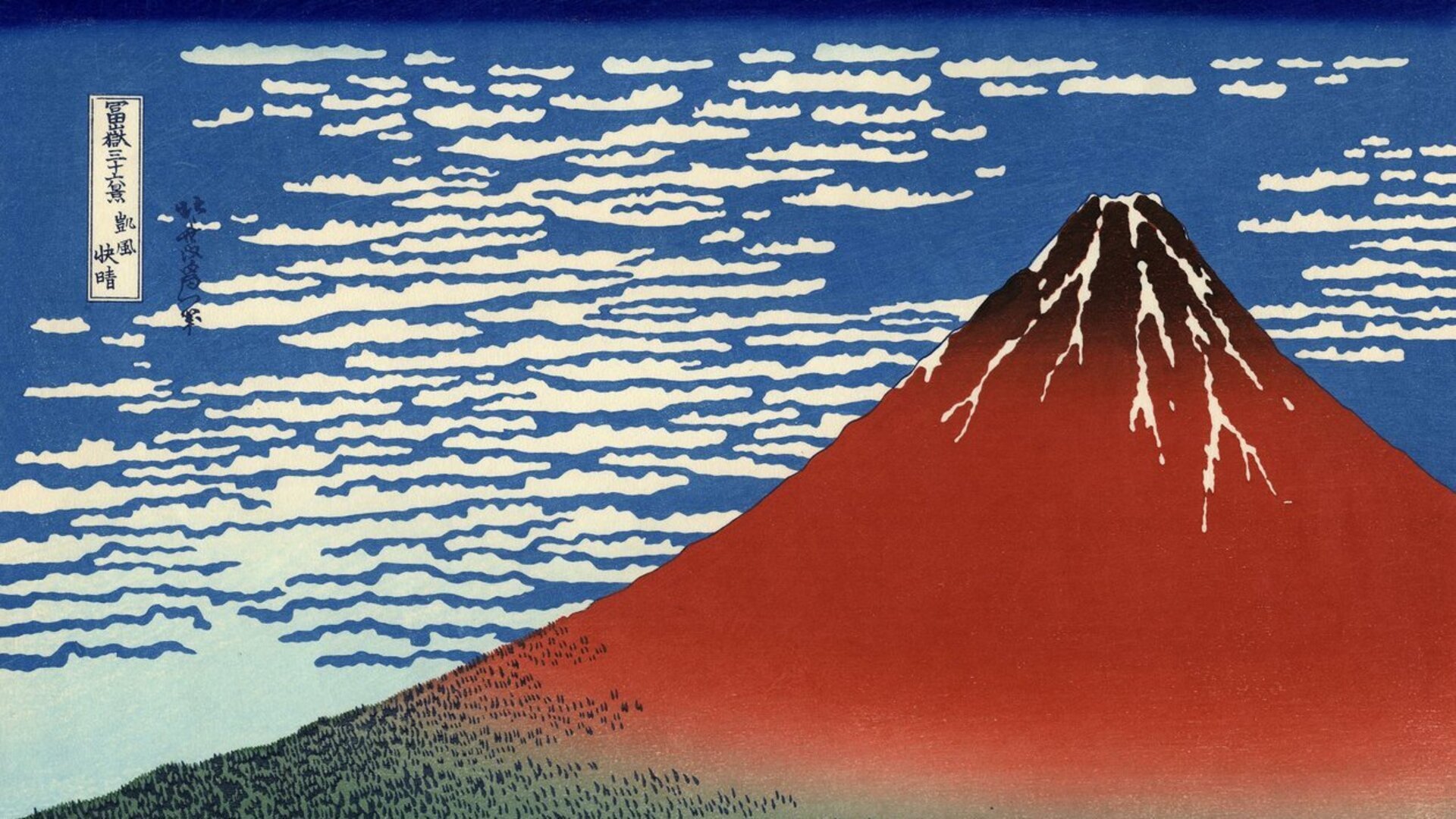Through stylised landscapes, scenes of everyday life and fantastical visions, Hokusai laid the foundations for a modern graphic touch still found in contemporary art far beyond the Nipponese shores. These 5 prints, which can be seen in numerous public collections, provide an insight into the breadth and wealth of his work.
Katsushika Hokusai (1760-1849) was active during the Edo period, in what is now Tokyo, and lived for almost a century, engaged in constant dialogue with his art. His sprawling body of work combines Japanese tradition and European influence, rigorous observation, unconstrained composition and a taste for the unexpected.
Planning a trip to Japan?
Here are some articles to help you prepare for your stay
:
-
Japan: Which island should you pick for a trip to the Land of the Rising Sun?
-
This is the oldest city in Japan, a cultural and historical capital
-
What to do in Osaka? 5 must-visit places in Japan’s third largest city
An extraordinary career in the service of drawing
Born in 1760 and died almost a century later, Katsushika Hokusai changed his name more often than he changed workshop, but never stopped drawing. A painter, engraver and precursor of manga, he captured it all, from a glacial mountain torrent to the fevered visions of an erotic dream.
Obsessed with Mount Fuji
, he turned it into a graphic icon in his series of
Thirty-Six Views of Mount Fuji
. But behind the mountain lies a volcano of freedom: shattered compositions, western-inspired perspectives, a fascination with the everyday and the invisible. And above all, an idea of drawing as a breath of life, which the Impressionists, Art Nouveau and even today’s designers keep on reinterpreting.
The Great Wave of
f
Kanagawa
(1831)
Kanagawa-oki nami-ura
opens the series of
Thirty-six Views of Mount Fuji
(circa 1831). In it, Hokusai captures the moment a gigantic swell threatens to roll over three fishermen’s boats, with a view of the snow-capped Mount Fuji up in the distance.
Through its masterful use of movement and colour, the image becomes an allegory of human fragility in the face of nature. Printed using imported pigments – notably Prussian blue – the print was duplicated hundreds of time. Afterwards, this work was celebrated in the Western world: Degas, Gauguin, Monet, Van Gogh… many artists collected reproductions.
Conservation:
Metropolitan Museum of Art (New York)
,
British Museum (Lond
on)
.
Fine Wind, Clear Morning
(1831)
Fine Wind, Clear Morning
(often called
Red Fuji
), another of the
Thirty-Six Views
, shows the old volcano illuminated by the first rays of morning. The light paints the southern slope orange-red, while the sky remains clear. No movement and total silence.
This is a great example of Hokusai assimilating the lessons of Western perspective: he opened up thanks to clean flat planes, yet with none of the spatial hierarchy of the European method. This results is an image both stylised and luminous, celebrating the immutable majesty of Fuji with its clean beauty.
Conservation:
The Metropolitan Museum of Art (New York)
,
Art Institute of Chicago
.
The Dream of the Fisherman’s Wife
(1814)
Published in 1814 in an erotic collection (
shunga
), this daring print depicts a young female diver in the embrace of two octopuses. Hokusai’s vision is as sensual as it is fantastic: the woman in the throes of ecstasy and the sinuous tentacles of the octopuses form a composition as graceful as it is disturbing.
The Dream of the Fisherman’s Wife
has become one of the world’s most famous works of Japanese erotica. Some might find it shocking, but this image has intrigued and inspired artists throughout the ages. Pablo Picasso, a great admirer of Japanese art, is said to have owned one of the prints.
Conservation:
British Museum (Lond
on)
,
The Metropolitan Museum of Art (New York)
,
Art Institute of Chicago
.
Cranes on Branch of Snow-covered Pine
(circa 1832)
This depiction of graceful birds is part of the series of
Large
Bird-and-Flower Paintings
(Kachō-e). Two cranes, traditional symbols of longevity, stand out against the branches of a snow-covered pine tree.
In this piece, Hokusai uses an extremely precise graphic language: every needle, every feather is carefully considered, stylised yet faithful to the observation of living things. The pale background and smaller volumes reinforce the elegance of the motif. This type of scene, highly codified in Japanese prints, allowed Hokusai to explore the tension between realism and decorative abstraction.
Conservation:
Sumida Hokusai Museum (Tokyo)
,
Musée Guimet (Paris)
.
The Amida Falls in the Far Reaches of the Kisokaidō Road
(1832)
Kisoji no oku Amida-ga-taki
belongs to the
Tour of the Waterfalls of the Provinces
series. The artist opts for a vertical format to depict a
tall, white waterfall
framed by fir trees, while small pilgrims walk at the base.
The composition emphasises perspective through the interplay of tilted trunks and contrasting colours – blue, dark green, flashes of red, guiding the viewer’s eye across the image. By depicting these spectacular natural sites, Hokusai broadened the scope of his prints to include hitherto little-explored landscapes, in according with the burgeoning fashion for inward contemplation during the Edo period.
Conservation:
British Museum (Lond
on)
,
Museum of Fine Arts Boston
.







